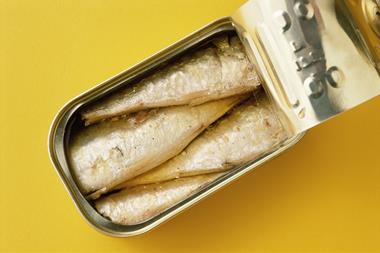However, from the outset I had two concerns one, the sushi was frozen and two, it contained no raw fish. As fresh, raw fish is the main ingredient of the genuine article, I was curious to see how it would turn out.
Once defrosted (it takes about three hours) and unpacked you are presented with 15 sushi pieces packed with rice and all wrapped neatly in seaweed.
It is unlikely that you could offer it around in its tray as it is too flimsy and the sushi is too squashed together. But, once arranged on a plate, it would make a colourful offering at a buffet party.
It is very fishy, though, so it is not advisable to present it as finger food.
The product has all the traditional sushi bits ginger, wasabi (a green peppery paste) and soy sauce but the raw salmon has been substituted with smoked salmon and the raw tuna by a cooked tuna cucumber mix. Despite my disappointment, the thought of raw fish does make many people squirm, so it is understandable the product has been tailored to suit the British palette to make it as accessible as possible.
It is not a bad imitation, but the ingredients list makes for fairly grim reading. Heaps of E numbers, thickeners, preservatives and bulking agents take this traditionally simple dish into the realms of processed food.
Ironically, the ingredient list is right next to the sales blurb describing the origins of the dish and that it is recognised as being healthy'.
At £4.99, the price reflects the filling; genuine sushi of these proportions could cost over £20. If you ignore the blurb on the back of the pack claiming that this is the genuine article, cast the long ingredients list from your mind and accept the product for what it is very tasty.
{{P&P }}
Close menu
- Home
- Retail & Wholesale
-
Products & Suppliers
- Back to parent navigation item
- Products & Suppliers
-
Product Categories:
- Back to parent navigation item
- Product Categories:
- Alcoholic drinks
- Bakery
- Cereals & breakfast
- Cheese
- Chicken & poultry
- Chocolate
- Confectionery
- Crisps, nuts & snacks
- Dairy
- Fish
- Fresh produce
- Frozen
- Household
- Meat
- Own Label
- Sauces & condiments
- Seasonal
- Soft drinks
- Vaping
- Vegan & plant-based
- World foods
- Suppliers
- People
- Reports & Data
-
Topics A-Z
- Back to parent navigation item
- Topics A-Z
-
Popular topics:
- Back to parent navigation item
- Popular topics:
- Cost of living crisis
- Crime
- Deposit Return Schemes
- Finance
- Government & Regulation
- Health
- Inflation
- Loyalty
- Marketing
- Mergers & Acquisitions
- New Product Development
- Sourcing
- Supply chain
- Sustainability & environment
- Technology
- Ultra Processed Foods
- Vaping
- A-Z all topics
- Content by type:
- Events
- Ask iA (beta)
- Subscribe now
Sign in to comment on this article
Not logged in before? Register for FREE guest access today.
You will be able to:
- Read more stories
- Receive daily newsletters
- Comment on stories
Advert

















No comments yet